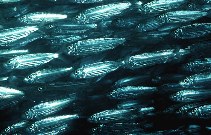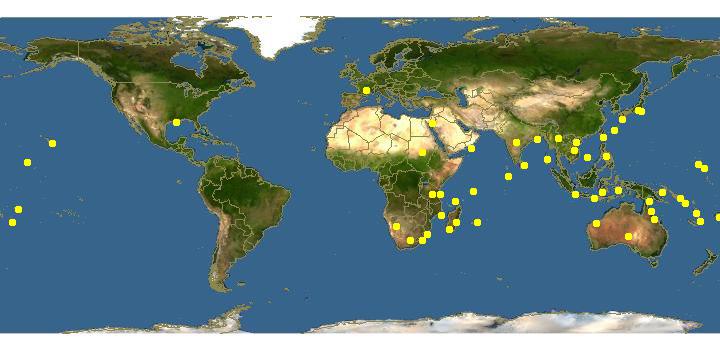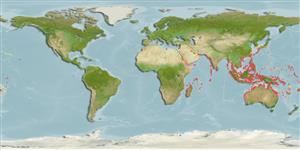http://www.fishbase.org/Summary/speciesSummary.php?genusname=Herklotsichthys&speciesname=quadrimaculatus ---> http://192.134.151.83/Summary/speciesSummary.php?genusname=Herklotsichthys&speciesname=quadrimaculatus
http://192.134.151.83/Summary/speciesSummary.php?genusname=Herklotsichthys&speciesname=quadrimaculatus ---> https://fishbase.mnhn.fr/Summary/speciesSummary.php?genusname=Herklotsichthys&speciesname=quadrimaculatus
https://fishbase.mnhn.fr/Summary/speciesSummary.php?genusname=Herklotsichthys&speciesname=quadrimaculatus ---> https://fishbase.mnhn.fr/summary/Herklotsichthys-quadrimaculatus.html
Herklotsichthys quadrimaculatus, Bluestripe herring : fisheries, bait

You can
sponsor
this page
Common name (e.g. trout)
Genus + Species (e.g. Gadus morhua)
-

-
About this page
-
Languages
-
User feedbacks
-
Citation
-
Uploads
-
Related species
-


 Bluestripe herring
Add your observation in
Fish Watcher
Upload your
photos
and
videos
Bluestripe herring
Add your observation in
Fish Watcher
Upload your
photos
and
videos
Pictures
|
Videos |
Google image
 Herklotsichthys quadrimaculatus
Herklotsichthys quadrimaculatus
Picture by
Randall, J.E.
Teleostei (teleosts) >
Clupeiformes
(Herrings) >
Dorosomatidae
(Gizzard shads and sardinellas)
Etymology:
Herklotsichthys:
After Janus Adrian Herklots, Australian ichthyologist, 1820-1872
.
More on author:
Rüppell
.
Environment: milieu / climate zone / depth range / distribution range
Ecology
Marine; freshwater; brackish; reef-associated; depth range 0 - 13 m (Ref.
82332
). Tropical; 39°N - 33°S, 29°E - 166°W (Ref.
188
)
Indo-Pacific: widespread in Indian Ocean and western Pacific, including entire eastern coast of Africa, Madagascar, Mauritius eastward to Japan, eastern Australia, and Samoa (Ref.
188
). Introduced into Hawaii, apparently by accident, and now abundant (Ref.
188
). At least one country reports adverse ecological impact after introduction.
Length at first maturity / Size / Weight / Age
Maturity: L
m
12.3
, range 7 - 17 cm
Max length : 25.0 cm SL male/unsexed; (Ref.
48635
); common length : 10.0 cm SL male/unsexed; (Ref.
188
)
Dorsal
spines
(total): 0;
Dorsal
soft rays
(total): 16-23;
Anal
spines
: 0;
Anal
soft rays
: 15 - 21. Diagnosis: Body slender, its depth 18 to 30% of standard length; presence of two fleshy outgrowths on the hind margin of the gill opening; sharp belly with keeled scutes, 16-19 pre-pelvic and 12-14 post-pelvic scutes (Ref.
188
,
3259
). The presence of elongate wing-like scales underneath the normal paired pre-dorsal scales separate it from all other species except the two Australian species with prominent black spots on the flank,
Herklotsichthys koningsbergeri
and
Herklotsichthys
Species A, and the unspotted
Herklotsichthys
Species B, which has dusky tips to dorsal and caudal fins and more lower gill rakers, 36-42 vs. 33-36 in
H. quadrimaculatus
(Ref.
188
). Flank silvery with an electric blue line preceded by two orange spots (Ref.
188
).
Adults form schools near mangroves, shallow coastal bays and lagoons during the day and moves further offshore into deeper water by night (Ref.
188
,
48635
); at depths of 0-13m (Ref.
58302
,
82332
). Known in mills around in large schools under wharves or along sandy beaches in protected bays (Ref.
26367
). Pelagic (Ref.
58302
). Feeds on zooplankton, mainly at night, chiefly copepods in juvenile stages, but larger prey as adults (chaetognaths, polychaetes, shrimps and small fishes) (Ref.
188
). Breeds during its first year and probably survives only a few months after maturity (Ref.
188
). Marketed fresh and dried salted (Ref.
188
). Usually parceled in leaves and baked in a motu oven. Do not recover quite as quickly as other species of baitfish after heavy fishing (Ref.
26367
).
Oviparous (Ref.
205
). Breeds during its first year and probably survives only a few months after maturity (Ref.
188
).
Whitehead, P.J.P.
, 1985. FAO Species Catalogue. Vol. 7. Clupeoid fishes of the world (suborder Clupeoidei). An annotated and illustrated catalogue of the herrings, sardines, pilchards, sprats, shads, anchovies and wolf-herrings. FAO Fish. Synop. 125(7/1):1-303. Rome: FAO. (Ref.
188
)
IUCN Red List Status (Ref.
130435
)
Least Concern (LC)
; Date assessed:
28 February 2017
CITES
Not Evaluated
Not Evaluated
Threat to humans
Potential pest (Ref.
6362
)
Human uses
Fisheries: minor commercial; bait: usually
FAO - Fisheries:
landings
; Publication:
search
|
FishSource
|
Sea Around Us
More information
Countries
FAO areas
Ecosystems
Occurrences
Introductions
Stocks
Ecology
Diet
Food items
Food consumption
Ration
Common names
Synonyms
Metabolism
Predators
Ecotoxicology
Reproduction
Maturity
Spawning
Spawning aggregation
Fecundity
Eggs
Egg development
Age/Size
Growth
Length-weight
Length-length
Length-frequencies
Morphometrics
Morphology
Larvae
Larval dynamics
Recruitment
Abundance
BRUVS
References
Aquaculture
Aquaculture profile
Strains
Genetics
Electrophoreses
Heritability
Diseases
Processing
Nutrients
Mass conversion
Collaborators
Pictures
Stamps, Coins Misc.
Sounds
Ciguatera
Speed
Swim. type
Gill area
Otoliths
Brains
Vision
Tools
Bio-Quiz
|
E-book
|
Field guide
|
Identification keys
|
Length-frequency wizard
|
Life-history tool
|
Point map
|
Classification Tree
|
Catch-MSY
|
Special reports
Check for Aquarium maintenance
|
Check for Species Fact Sheets
|
Check for Aquaculture Fact Sheets
Download XML
Summary page
|
Point data
|
Common names
|
Photos
Internet sources
AFORO (otoliths)
|
Alien/Invasive Species database
|
Aquatic Commons
|
BHL
|
Cloffa
|
BOLDSystems
|
Websites from users
|
Check FishWatcher
|
CISTI
|
Catalog of Fishes
:
genus
,
species
|
DiscoverLife
|
ECOTOX
| FAO - Fisheries:
landings
; Publication:
search
|
Faunafri
| Fishipedia |
Fishtrace
| GenBank:
genome
,
nucleotide
|
GloBI
|
Google Books
|
Google Scholar
|
Google
| IGFA World Record |
MitoFish
|
National databases
|
Otolith Atlas of Taiwan Fishes
|
PubMed
|
Reef Life Survey
|
Socotra Atlas
|
Tree of Life
| Wikipedia:
Go
,
Search
| World Records Freshwater Fishing |
Zoological Record
Estimates based on models
Preferred temperature (Ref.
123201
): 24.9 - 29.3, mean 28.5 °C (based on 3173 cells).
Phylogenetic diversity index (Ref.
82804
): PD
50
= 0.5002 [Uniqueness, from 0.5 = low to 2.0 = high].
Bayesian length-weight: a=0.00977 (0.00598 - 0.01598), b=3.08 (2.94 - 3.22), in cm total length, based on LWR estimates for this species & (Sub)family-body (Ref.
93245
).
Trophic level (Ref.
69278
): 3.6 ±0.4 se; based on diet studies.
Generation time: 1.1 ( na - na) years. Estimated as median ln(3)/K based on 1
growth studies.
Resilience (Ref.
120179
): High, minimum population doubling time less than 15 months (K=2.6).
Fishing Vulnerability (Ref.
59153
): Low vulnerability (17 of 100).
Climate Vulnerability (Ref.
125649
): High vulnerability (58 of 100).
Price category (Ref.
80766
):
Low
.
Nutrients (Ref.
124155
): Calcium = 121 [63, 259] mg/100g; Iron = 1.42 [0.68, 2.55] mg/100g; Protein = 19.8 [18.5, 21.1] %; Omega3 = 0.215 [0.106, 0.453] g/100g; Selenium = 40.7 [18.6, 93.2] μg/100g; VitaminA = 42.4 [13.2, 139.7] μg/100g; Zinc = 1.82 [1.16, 2.83] mg/100g (wet weight);
Back to Search
Random Species
Back to Top
Accessed through:
Not available
FishBase mirror site :
localhost
Page last modified by :
mrius-barile
- 20 July 2016
Fatal error
: Uncaught ArgumentCountError: Too few arguments to function checkEcotox(), 1 passed in /var/www/html/summary/speciessummary.php on line 2304 and exactly 3 expected in /var/www/html/includes/speciessummary.lib.php:2579 Stack trace: #0 /var/www/html/summary/speciessummary.php(2304): checkEcotox() #1 {main} thrown in
/var/www/html/includes/speciessummary.lib.php
on line
2579
|






